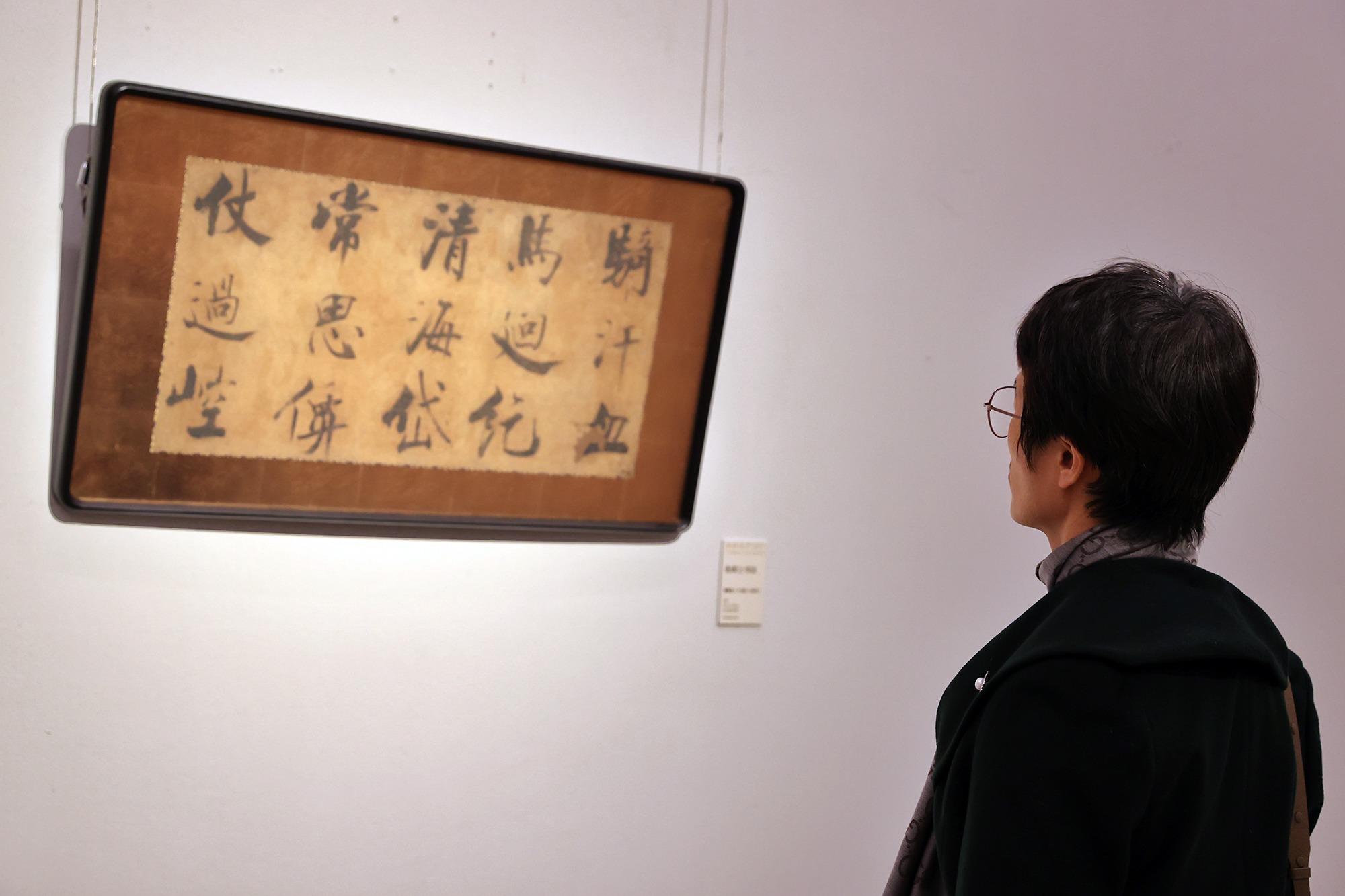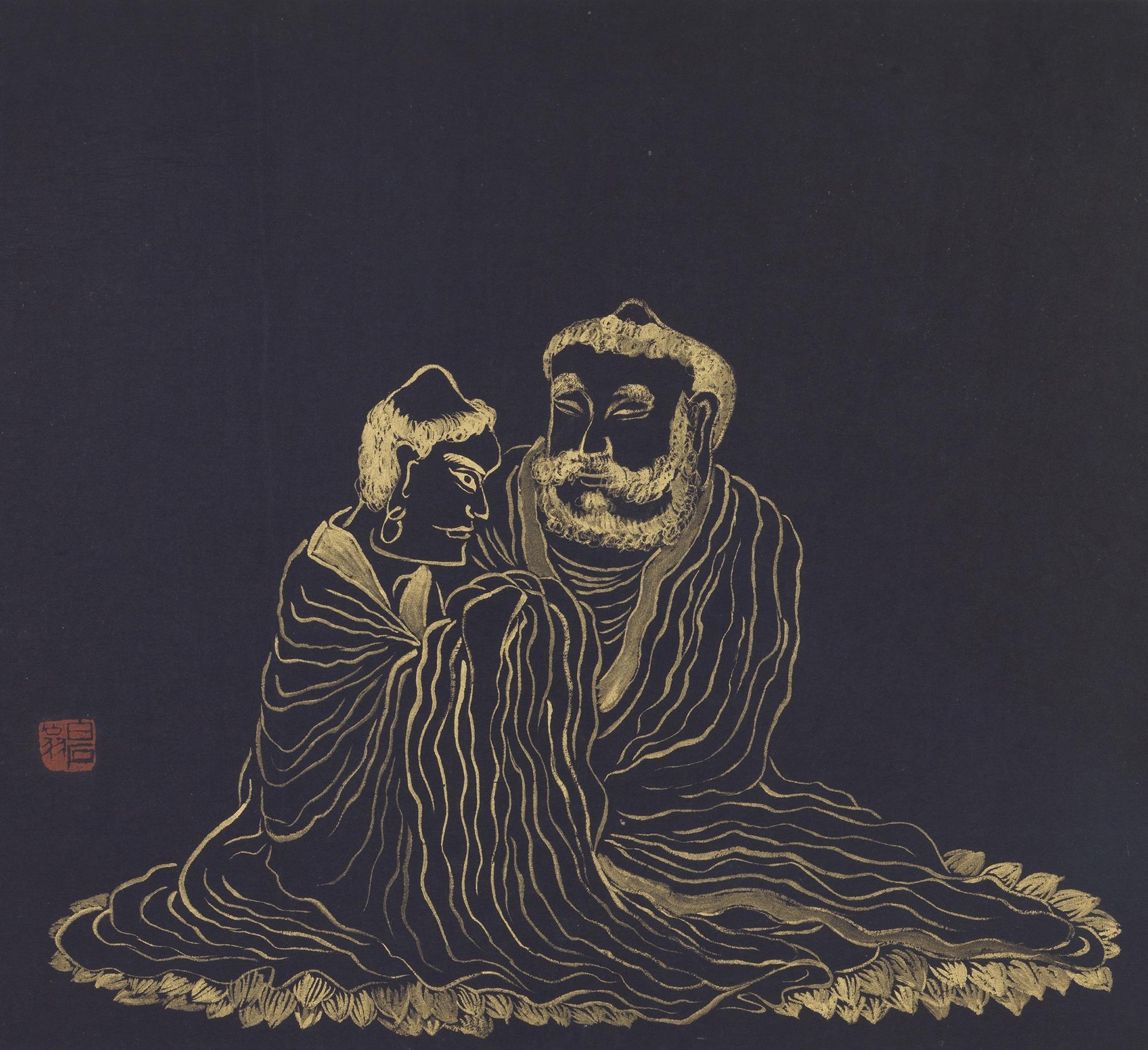 A man admires the calligraphy of Zhang Jizhi of the Southern Song Dynasty (1127-1279) at Purity and Glory in Beijing. (JIANG DONG / CHINA DAILY)
A man admires the calligraphy of Zhang Jizhi of the Southern Song Dynasty (1127-1279) at Purity and Glory in Beijing. (JIANG DONG / CHINA DAILY)
One day in October 1942, Hongyi, the master monk who realized he was reaching the end of his life, wrote down his last words: beixin jiaoji (a mixture of sadness and relief).
He passed away three days later, at a nursing home in Quanzhou, Fujian province.
The four characters were written on a piece of used paper, about half the size of an A4 sheet.
Not only does it deliver Hongyi's message of farewell to the world, but it also is recognized as a stellar piece of calligraphy that the eminent monk has rightly been acclaimed for.
Born Li Shutong, he had achieved a great deal in the fields of music, painting, calligraphy and theater, before becoming a monk in 1918. In the following years he focused on calligraphy, and his writing style evolved — the characters became elongated. His understanding of calligraphy was explained in a letter to a friend in 1941, in which Hongyi wrote: "The characters I write are to show simplicity, serenity and a request of otherworldly feeling."
A rare view of Hongyi's last calligraphic piece, beixin jiaoji, is on offer at an ongoing exhibition, Purity and Glory, which marks the 70th anniversary of The Buddhist Association of China. Held at the National Art Museum of China in Beijing until Tuesday, it is also a diverse presentation of the integration of art with Buddhism to communicate the essence of Chinese cultural traditions and values.
On show are more than 100 paintings, calligraphic works and sculptures made by followers of Buddhism, or by artists with a theme of Buddhism, such as copies of the murals of Dunhuang grottoes in Gansu province.
 Arhats by Qi Baishi. (PHOTO PROVIDED TO CHINA DAILY)
Arhats by Qi Baishi. (PHOTO PROVIDED TO CHINA DAILY)
Chinese art history produced several monk-artists of prominence like Hongyi, for example, the "Four Monk-painters of early Qing Dynasty (1644-1911)", which refers to a list that includes Shitao, born Zhu Ruoji, and Bada Shanren, born Zhu Da, whose works are also on show. The two painters both hailed from the imperial line of the Ming Dynasty (1368-1644), and its collapse changed the paths of their lives, deeply influencing their art.
Both highly individualized in their work, Shitao gave a full expression of his cynical views of life and art through vivid, rich details of nature, while Bada Shanren deployed an eccentric style of minimalism.
Buddhist figures and murals in temples and caves that are centuries old constitute an important part of Chinese art. Copying them is not only a regular practice for artists today to learn about ancient artistry, but also as a way of preservation.
In her early teens, Chang Shana followed her father, Chang Shuhong, founding director of Dunhuang Academy, into the caves and learned to copy those murals. The father and daughter held a joint exhibition in 1947 of their reproductions to raise fund for the preservation and study of Dunhuang. One of Chang Shana's works from that show is also on display.
She once said that Dunhuang and its art are important sources for the Chinese to draw upon, "because we need to thrive on the core of our cultural traditions".
Wu Weishan, director of the National Art Museum of China, says that Buddhist-themed art is "a legacy of values in the treasure trove of diverse Chinese art", and because the form helps "cultivate one's temperament, calm one's mind, and nurture one's heart, it is an important vehicle to present the enduring charm of Chinese culture".


